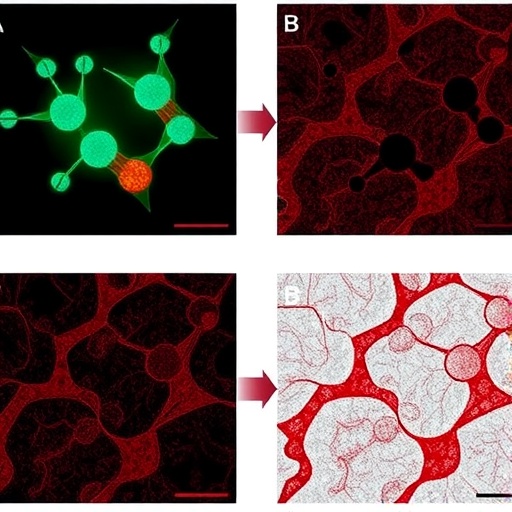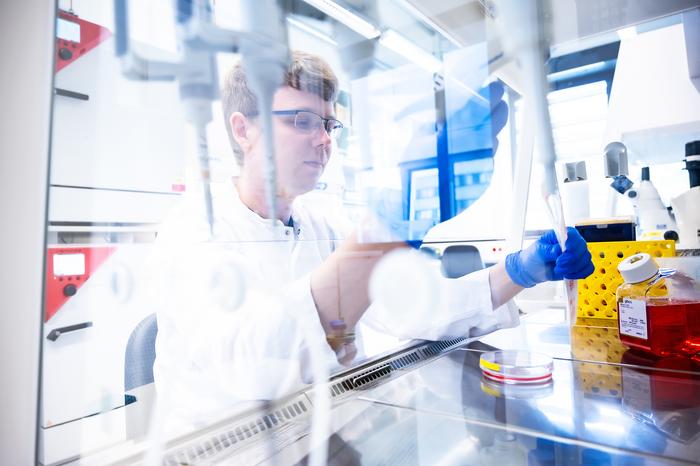Credit: IBS
One bit of digital information can now be successfully stored in an individual atom, according to a study just published in Nature. Current commercially-available magnetic memory devices require approximately one million atoms to do the same. Andreas Heinrich, newly appointed Director of the Center for Quantum Nanoscience, within the Institute of Basic Science (IBS, South Korea), led the research effort that made this discovery at IBM Almaden Research Center (USA). This result is a breakthrough in the miniaturization of storage media and has the potential to serve as a basis for quantum computing.
Disks coated with a magnetized layer of metal allow our computers to store files in the form of bits, each with the value of either 1 or 0. A certain direction of magnetization corresponds to the 0 bit, the other direction to the 1 bit. While at the moment small areas of the disk, of around a million atom, correspond to each digital bit of information, this research went way beyond this and utilized the smallest amount of matter usable for this purpose: one atom.
In this study, scientists worked with a tool, called Scanning Tunneling Microscope (STM), which has a special tip that enables the user to view and move individual atoms, as well as to apply a pulse of electrical current to them. They used this electric pulse to change the direction of magnetization of individual holmium atoms. By doing that, the team could write a memory of either 1 or 0 in a single holmium atom as well as swap the two.
A quantum sensor, designed by Heinrich's team and currently unique worldwide, was used to read the memory stored in the holium atom. It consists of an iron atom placed next to the holmium atom. Using this technique, as well as another one, called tunnel magnetoresistance, the researchers could observe that holmium maintains the same magnetic state stably over several hours.
Then, when Heinrich's team of researchers tried to use two holmium atoms instead of one, they made another surprising discovery. Placing holmium atoms even one nanometer apart did not impact their ability to store information individually. This came as a surprise, since it was expected that the magnetic field from one atom would impact its neighbor. To put this scale into perspective, if a nanometer were blown up to the diameter of a typical human hair, the hair would have a diameter equivalent to the length of a school bus in comparison.
In this way, the scientists could build a two bit device with four possible types of memory: 1-1, 0-0, 1-0 and 0-1 clearly distinguished by the iron sensor.
Moore's Law predicted that the amount of data that can be stored on a microchip would double every 18 months and indeed this happened for decades. The last model electronic devices are always smaller and more powerful than the previous one. However, as devices becomes smaller and smaller, since atoms are so close to each other, new interfering quantum properties begin to manifest and cause problems. The impossibility of keeping up with further miniaturization, brought experts to talk about the death of Moore's Law.
Interestingly, holmium atoms seem to escape this fate, for still unknown reasons. "There are no quantum mechanical effects between atoms of holmium. Now we want to know why," points out Heinrich. Holmium atoms can be arranged very closely together, so the storage density using this single-atom technique could be very high. He continues: "We have opened up new possibilities for quantum nanoscience by controlling individual atoms precisely as we want. This research may spur innovation in commercial storage media that will expand the possibilities of miniaturizing data storage."
Heinrich is one of the few in the world using this tool to measure and change the properties of individual atoms. He plans to significantly expand on this research at his newly created IBS research center, located at Ewha Womans University in Seoul.
###
Media Contact
Letizia Diamante
82-428-788-260
@IBS_media
http://www.ibs.re.kr/en/
############
Story Source: Materials provided by Scienmag





